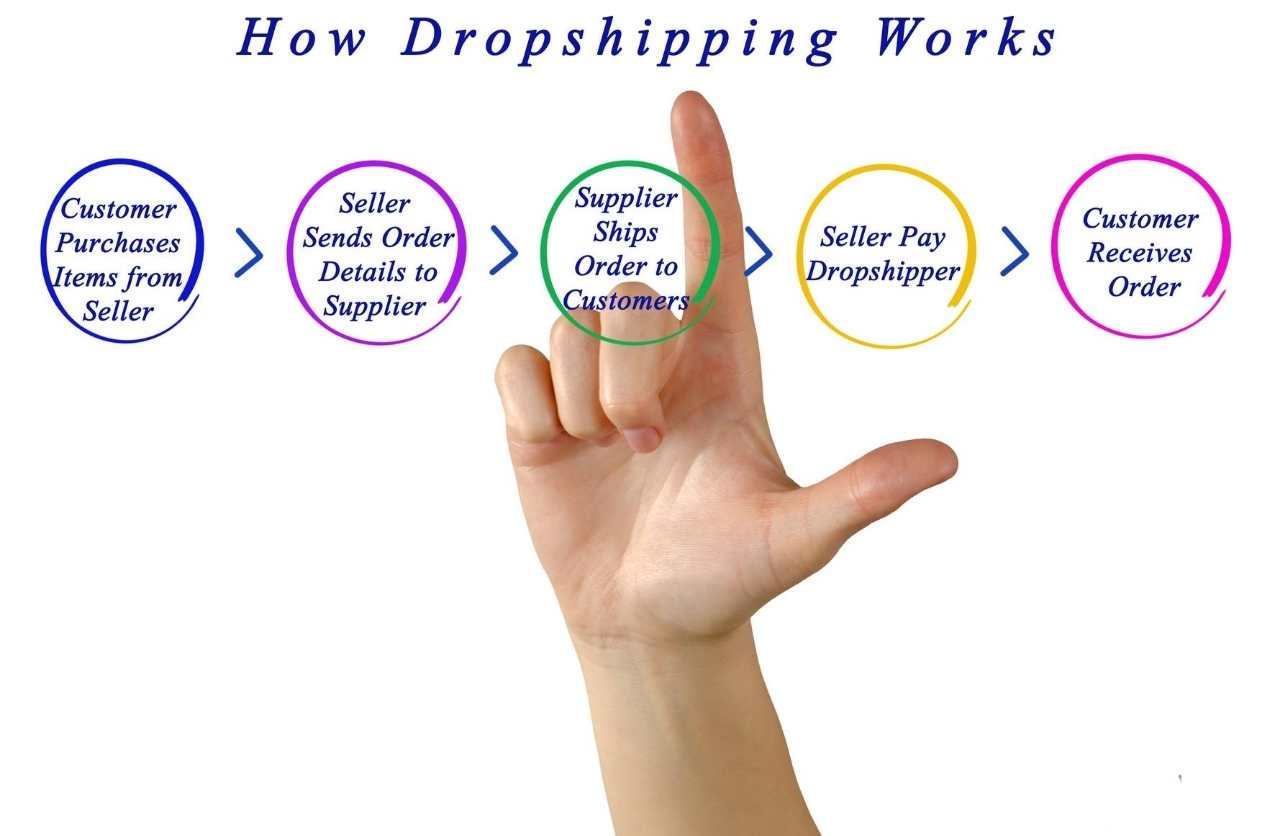Are you considering affiliate marketing vs drop shipping? Both are business ideas that are relatively easy to set up and don’t require too much investment. They’re easy to maintain too, at least compared to a traditional brick-and-mortar business.
There is money to be made from both, and thousands of people have succeeded using both bethods. The two concepts are similar in many ways, but I’ll point out some key differences that can make affiliate marketing the better choice. This is especially true if you’re new to the industry.
Want to know which affiliate marketing method works best for you? Answer the short quiz below:
I’ll dive into the details shortly, but first, let’s define each business concept, so we know exactly what we’re talking about.
What is Affiliate Marketing?

In simple terms, affiliate marketing is a setup where you earn a commission for promoting other people’s products. So you find a product or products that you like, market them, and get a percentage of the profit for each sale made to customers you have brought in.
- Every product you’re promoting on your website will come with an affiliate link that will direct your clients to the actual storefront selling the item.
- You don’t need to worry about inventory, shipping for physical products, refund policies, and the like.
- Your job is simply to get people interested enough to want to buy the product, and the person/store selling the product takes care of the rest.
As an affiliate marketer, you target a select audience and market products that you know will appeal to them. The more traffic you get to your site, the higher your conversion rate is likely to be, and ultimately, the more profit you can make.
What is DropShipping?

Dropshipping basically makes you the middle man between the supplier/manufacturer and the customer. You don’t need to keep your own stock. Instead, you sell the product and pass the sales order on to your supplier, who is then responsible for shipping the order to the customer.
- As the drop shipper, your supplier offers the product to you at a discounted price. So your profits come from the difference in what you paid and your sale price.
- Because you don’t need to worry about inventory and shipping, you can put your resources into marketing, advertising, and managing your online presence.
- You’re not the one stocking and shipping the products, but you still have to keep track of sales orders.
- You’re the storefront, so it will be up to you to address any problems with the product or shipping.
As a drop shipper, it’s up to you to market your supplier’s products and generate sales on your own website. And as far as the customer is concerned, you’re the seller, so all communication goes through you before getting to your supplier.
Twin Concepts that May Appear The Same
In a way, affiliate marketing and drop shipping are two sides of the same coin. Neither expects you to stock your own products or arrange for shipping, both of which are big hassles.
There’s a lot they share in common:
-
- Your start-up costs are minimal. You don’t need to put a lot of money into R&D or rent warehouse space to keep your stock, and you don’t have to worry about delivery schedules either.
- Start-up risks are low. Making a loss is never pleasant, but if you haven’t put in too much, it makes it more bearable.
- They’re flexible. You can choose and work with whatever products you like, and as many or as few products as you like. There are no limitations. If you decide one product isn’t working well, you can replace it with another.
- Both offer passive income. What you’re focusing on is building an online presence and driving traffic to your website. Once that is done, you can earn money 24-7, even while you sleep.
- Both require marketing effort and skills. The only time you make money is if somebody actually buys the product through your link or directly from your storefront, so it’s all about getting high-conversion traffic.
A surface skim makes it seem like affiliate marketing and drop shipping are just two names for the same thing, but that’s not true.
So what makes the difference?
The differences are not many, but it’s crucial to understand them if you want to succeed, be it in affiliate marketing or drop shipping.
- With drop shipping, you’re running a retail business. Sure, you’re sourcing out the inventory and item delivery, but you’re still the face of the store. The buyer transacts with you 100%, including making payments and sorting out issues with their order.
- An affiliate marketer doesn’t sell anything directly. You are an influencer or blogger, posting articles, reviews, and product recommendations. Don’t sell anything on your website, just post links which direct people where to buy the product. Don’t ever process any payments or deal with customer care.
Whatever other differences there may be all stem from whether you sell directly via your own storefront, or you simply direct people to buy via a link.
- If you’re dropshipping, you’ll create a listing of all the products you’re selling directly on your website, whereas as an affiliate you’ll just link out to however many products you’re promoting.
- As a dropshipper, you can dictate your profit margin because you can sell the product at whatever price you want (but remember, there’s stiff competition driving your profit margins down). As an affiliate, your profit per sale is fixed by the product seller.
Dropshipping can work, but…
Dropshipping is certainly not a bad idea, and some people have made six-figure incomes on it. But there are a few hard truths about it that don’t get talked about as much as the perks.
Simply put, it will be hard to get your business off the ground if you’re only doing dropshipping.
- Low profit margins. Investment costs in dropshipping a low, so there’s a lot of competition, meaning you can’t get much profit on whatever you sell. And remember, your sales come from traffic which you won’t have much of in the beginning, yet you’re still paying to run and maintain your store.
- Dropshipping is a lot of work. It may seem hassle-free, but you’re constantly dealing with wholesale suppliers, order processing, customer care, and returns.
- You’re trapped with no control over the supply chain. If your customers complain about the product quality or sluggish delivery times, you’re the one that has to deal with them. At the same time, all you can do is hope your supplier does something about it, with no way to directly influence the process.
If you’re an already established eCommerce business with a lot of traffic, though, dropshipping can be a great way to add products to your store. That way you get more business without incurring additional inventory costs.
Affiliate Marketing is Less Hassle but Can Still Earn High Profits
You will need to set up a blog or something similar, and you will have to put in some effort and money into getting good quality traffic. But in so many ways, affiliate marketing is a better bet if you’re just starting out.
- Affiliate marketing is more passive. Yes, you’ll need to do some work, but it’s limited to keeping fresh, relevant content on your website, and you can even pay a content writer to do it for you. No order processing, dealing with irate customers or handling returns.
- Less of an investment required. With affiliate marketing, you just need to join an affiliate network, no need to contact suppliers. And when it comes to the website, where a dropshipper needs a (more expensive) storefront, an affiliate just needs a blog.
Dropshipping also requires internal infrastructure that affiliate marketing doesn’t, like a business bank account and payment handling capabilities within the store.
- Affiliate marketing is more versatile. It’s much easier to build trust for a blog than for a storefront. If you want to sell the latest tech or trending product, you can build as many niche sites as you want to market your products.
Building trust for a storefront takes time, and it’s hard to suddenly start selling the latest baby toy if you’ve previously been selling sneakers and insoles.
- You can earn bigger commissions by selling high-ticket products. These are products that cost more money to buy and therefore bring more money in, even if the commission percentage is the same.
- Affiliate marketing is less risky. Because you’re directing traffic to somebody else’s store, you don’t need to worry about stocking, delivery or returns. You don’t need a payment portal on your website either.
Final Thoughts
Affiliate marketing and dropshipping are both viable, sustainable business concepts, and both have the potential to earn you a whole lot or nothing.
Which one will work better for you comes down to how much time and money you’re willing to put in, how experienced you are, and a touch of luck.
Creating and marketing a blog is easier than with dropshipping, and so is website maintenance. But you can still earn good money from your commissions.
So if you want a hassle-free, passive income that doesn’t require much skill or experience, then affiliate marketing offers an easier start with less risk.
Looking for high ticket affiliate programs? Check out my video below:
